HOW TO
Classify multispectral imagery pixels using Pix2Pix in ArcGIS Pro
Summary
Multispectral imagery is optical imagery with a high level of resolution, primarily utilized for the purpose of analyzing agriculture, forests, land use, and land cover change. This imagery provides a diverse range of spectral bands, spanning from the visible and near infrared to the shortwave infrared. In ArcGIS Pro, the classification of pixels in multispectral imagery can be achieved through deep learning using the Pix2Pix model parameter. This method generates images of one type to another, such as the translation of multispectral bands to RGB imagery. The workflow provided in this article involves exporting the training data for deep learning, followed by the training of a deep learning model. Subsequently, the trained model is utilized to classify the multispectral imagery pixel, as shown in the image below.
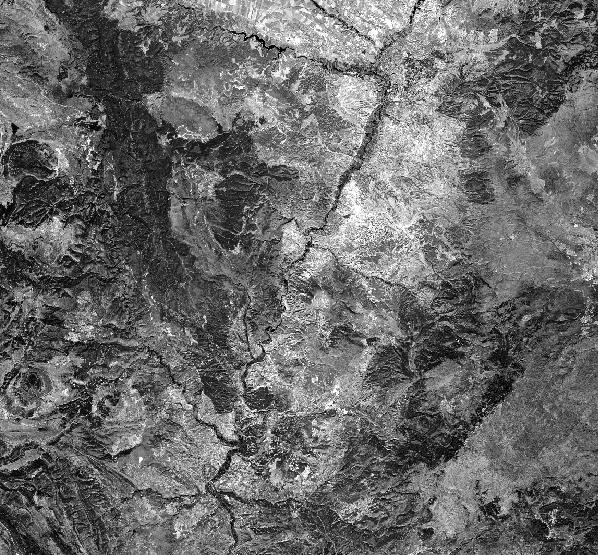
Procedure
Note: The following steps require an ArcGIS Image Analyst license. Refer to ArcGIS Pro: Use extensions for more information.
- Open the project in ArcGIS Pro.
- Convert the labeled raster data into deep learning training datasets using the Export Training Data For Deep Learning tool.
- In the Geoprocessing pane, search for and click Export Training Data For Deep Learning (Image Analyst Tools).
- In the Export Training Data For Deep Learning pane, for Input Raster, select the multispectral imagery layer from the drop-down list. In this example, the Sentinel-2_Level2A.tif imagery is used.
- For Additional Input Raster, select the additional input imagery layer used for the image translation method. In this example, the RGB imagery is used.
- For Output Folder, specify a name and location for the output image chips and metadata.
- For Metadata Format, select Export Tiles from the drop-down list.
- Click Run.
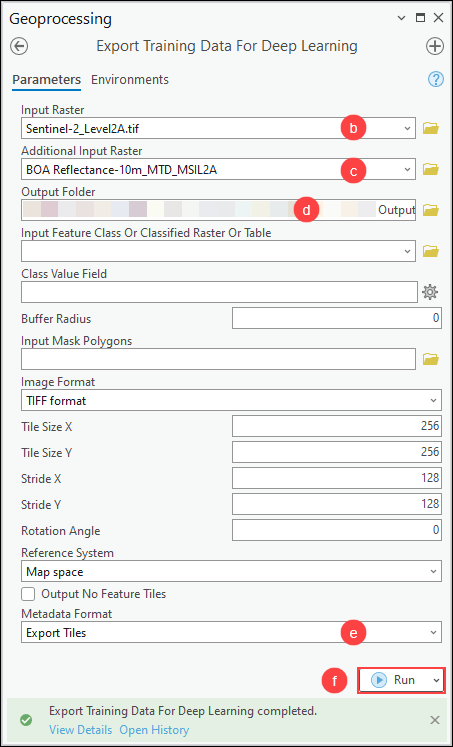
- Train a deep learning model for the output in Step 2 using the Train deep learning model tool.
- In the Geoprocessing pane, search for and click Train Deep Learning Model (Image Analyst Tools).
- In the Train Deep Learning Model pane, for Input Training Data, navigate to the location of the image chips created in Step 2 from the local folder and select it. Click OK.
- For Output Model, specify a location and name for the output trained model.
- For Model Type under Model Parameters, select Pix2Pix (Image translation) from the drop-down list.
- For Batch Size, specify the preferred number of training samples to be processed for training at one time. Refer to ArcGIS Pro: Parameters for more information.
- Click Run.
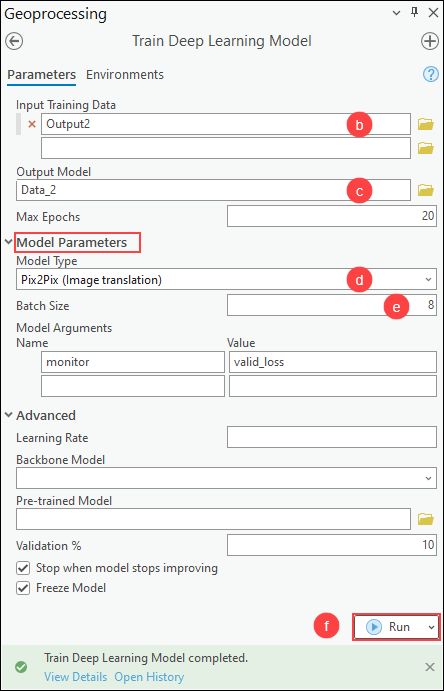
Note: The duration of the training process may be affected by the graphics processing unit (GPU) capability of the computer. If the process is significantly slower, install the appropriate GPU before training the deep learning model. Refer to ArcGIS Blog: Deep Learning with ArcGIS Pro Tips & Tricks: Part 1 for more information.
- Classify the multispectral imagery pixels using the Classify Pixels Using Deep Learning tool.
- In the Geoprocessing pane, search for and click Classify Pixels Using Deep Learning (Image Analyst Tools).
- In the Classify Pixels Using Deep Learning pane, for Input Raster, select the multispectral imagery layer from the drop-down list. In this example, the NSentinel-2_Level2A.tif imagery is used.
- For Output Raster Dataset, specify a location and name for the output raster.
- For Model Definition, navigate to the location of the output trained model in Step 3 from the local folder and select it. Click OK.
- Click Run.
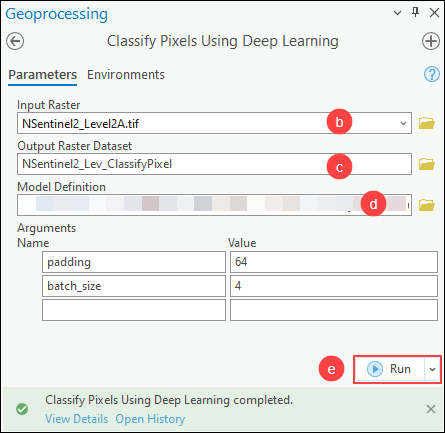
The image below shows the classified multispectral imagery pixels using deep learning.
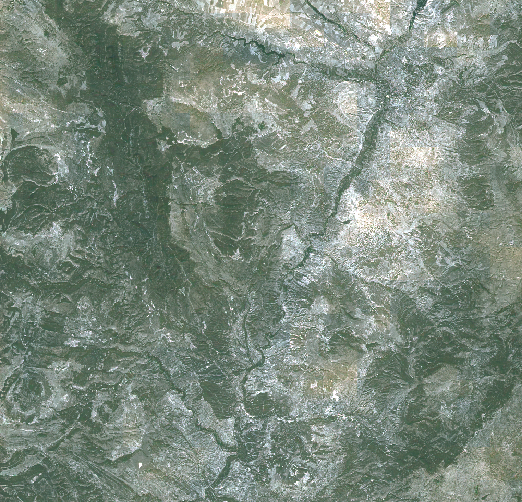
Article ID: 000031370
- ArcGIS Pro 3 1
- ArcGIS Pro 3 0
- ArcGIS Pro 2 9x
Get help from ArcGIS experts
Start chatting now

